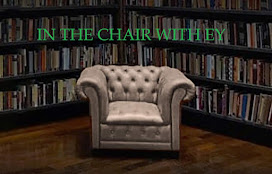 So on my Wade-In Publishing blog I continue to celebrate Black History Month (what I choose to think of as African American Recognition month) and share American history from the letters Z-A. This history embraces all races striving to make America a better place to live and is garnered from my multiracial American History Book.
So on my Wade-In Publishing blog I continue to celebrate Black History Month (what I choose to think of as African American Recognition month) and share American history from the letters Z-A. This history embraces all races striving to make America a better place to live and is garnered from my multiracial American History Book."We hold these truths to be self-evident, that all men are created equal, that they are endowed by their Creator with certain unalienable Rights that among these are Life, Liberty and the pursuit of Happiness."
Slavery
‘…. Once it was established that Africans could not escape from bondage as easily as the Native American, were outstanding in their agricultural ability, hardier in physical strength (which made them able to withstand and survive diseases like malaria and yellow fever) than the Native American the single use of African slave trade and labor became an American institution. By the 19th century almost all slaves were blacks.”
No matter how great the nation of America is, it is a known fact it would not be the metropolis it is now without the use of chattel slaves or other kinds of unfree laborers, such as indentured servants. This used and often mistreated part of society whether descendants from native Americans, Africans, Chinese or Japanese and through strength and determination contributed enormously to our economic, scientific and physical growth.
The history of slavery in the United States began soon after Europeans first settled in the area (and so even before the founding of the United States), and officially ended with the ratification of the Thirteenth Amendment in 1865. It is unclear whether the first Africans in North America were slaves. The first African slaves arrived in present day United States as part of the San Miguel de Gualdape colony (most likely located in the Winyah Bay area of present-day South Carolina), founded by Spanish explorer Lucas Vásquez de Ayllón in 1526.
The ill-fated colony was destroyed by a fight over leadership, during which the slaves revolted and fled the colony to find safety among the local Native Americans. De'Ayllón and many of the colonists died shortly after of an epidemic, and the colony was abandoned, leaving the escaped slaves behind on North American soil. In 1565 the colony of Saint Augustine in Florida became the first permanent European settlement in North America, and included an unknown number of African slaves considered the first African American born in the English colonies in North America.
The legend has been repeated endlessly that the first blacks in Virginia were "indentured servants," but there is no hint of this in the records. The legend was established because the word slave did not appear in Virginia's records until 1656, and laws defining the status of blacks began to appear casually in the 1660s. The inference was then made that blacks called servants must have had approximately the same status as white indentured servants. Such reasoning failed to notice that Englishmen, in the early seventeenth century, used the word servant when they meant slave in our sense, and, indeed, white Southerners invariably used servant until 1865 and beyond. Slave entered the Southern vocabulary as a technical word in trade, law and politics.
In 1619 the tobacco export business was going so well the colonists were able to afford two imports Africans and women from England, which would greatly contribute to their productivity and quality of life. The first twenty Negar slaves had arrived from the West Indies in a Dutch slave trader vessel that was running low on food and sold to the governor and a merchant in Jamestown, as reported by John Rolfe to John Smith back in London. Each woman cost 120 pounds of tobacco and the Africans were paid for in food and became indentured servants similar in legal position to many poor Englishmen who traded several years' labor in exchange for passage to America. The popular conception of a racial-based slave system did not develop until the 1680's.
Originally in the American colonies, 1600 to 1800, American Indians (Native Americans) and other groups, mostly white Europeans such as captured soldiers, minor criminals, etc., were used as slaves, following the arrival of the twenty Africans the face of American slavery began to change from the tawny Indian to the black moor African in the years between 1650 and 1750. Early on, indentured servants were most useful in the growing of indigo, rice, and tobacco; cotton was only a side crop. Nevertheless, it was clear that slaves were most economically viable in plantation-style agriculture. Once it was established that Africans could not escape from bondage as easily as the Native American, were outstanding in their agricultural ability, hardier in physical strength (which made them able to withstand and survive diseases like malaria and yellow fever) than the Native American the single use of African slave trade and labor became an American institution. By the 19th century almost all slaves were blacks.
During the British colonial period, slaves were used in mostly in the Southern colonies and to a lesser degree in the Northern colonies as well. While white and red labor was used initially, Africans were the final solution to the acute labor problem in the New World. One characteristic which set American slavery apart was its racial basis. In America, with only a few early and insignificant exceptions, all slaves were Africans, and almost all Africans were slaves. This period of transition caused tens of thousands of Native American Indian nations to be enslaved and relocated.
In the early years of the eighteenth century, the number of Native American slaves in areas such as the Carolinas may have been as much as half of the African slave population. During this transitional period, Africans and Native Americans shared the common experience of enslavement. In addition to working together in the fields, they lived together in communal living quarters, produced collective recipes for food and herbal remedies, shared myths and legends, and ultimately became lovers. The intermarriage of Africans and Native Americans was made possible by the larger number of African male slaves to females and the annihilation of Native American males by disease, enslavement, and prolonged wars with the colonists.
As Native American societies in the Southeast were primarily matrilineal, African males who married Native American women often became members of the wife's clan and citizens of the respective nation. As relationships grew, the lines of distinction began to blur. The depth and complexity of this interracial mixture is revealed in a 1740 slave code in South Carolina: all Negroes and Indians, mulattos or mustezoes who are now, or shall hereafter be in this province, and all their issue and offspring...shall be and they are hereby declared to be, and remain hereafter absolute slaves. Millions of Native Americans were also enslaved, particularly in South America.
With the success of tobacco planting, African Slavery was legalized in Virginia and Maryland, becoming the foundation of the Southern agrarian economy. By 1625, ten slaves were listed in the first census of Jamestown. The first public slave auction of 23 individuals, disgracefully, was held in Jamestown square itself in 1638.
Black freedmen would live in a legal limbo until the general emancipation in 1864, unable to stand witness in their own defense against the testimony of any Euro-American. The General Court dispositions that appear after 1640 seem to support this contention. Barbados was the first British possession to enact restrictive legislation governing slaves in 1644, and other colonial administrations, especially Virginia and Maryland, quickly adopted similar rules modeled on it. Whipping and branding, borrowed from Roman practice via the Iberian-American colonies, appeared early and with vicious audacity.
The general assembly of Virginia in 1662 passed an act which directly and consciously invoked Justinian code: partvs seqvitvr ventram, whereby a child born of a slave mother was also held to be a slave, regardless of its father's legal status. A few years later, the population of Africans in bondage in Virginia reached about 2,000, and another statute (1667) established compulsory life servitude, de addictio according to Roman code, for Negroes... slavery had become an official institution.The transformation from indentured servitude (servants contracted to work for a set amount of time) to racial slavery didn't happen overnight. There are no laws regarding slavery early in Virginia's history. By 1640, the Virginia courts had sentenced at least one black servant to slavery. It wasn't until 1661 that a reference to slavery entered into Virginia law, and this law was directed at white servants -- at those who ran away with a black servant. Three servants working for a farmer named Hugh Gwyn ran away to Maryland. Two were white; one was black. They were captured in Maryland and returned to Jamestown, where the court sentenced all three to thirty lashes -- a severe punishment even by the standards of 17th-century Virginia.
 The two white men were sentenced to an additional four years of servitude, one more year for Gwyn followed by three more for the colony. But, in addition to the whipping, the black man, a man named John Punch, was ordered to "serve his said master or his assigns for the time of his natural life here or elsewhere." John Punch no longer had hope for freedom.
The two white men were sentenced to an additional four years of servitude, one more year for Gwyn followed by three more for the colony. But, in addition to the whipping, the black man, a man named John Punch, was ordered to "serve his said master or his assigns for the time of his natural life here or elsewhere." John Punch no longer had hope for freedom. Link Directly To This Post :
Link To The Homepage :














































